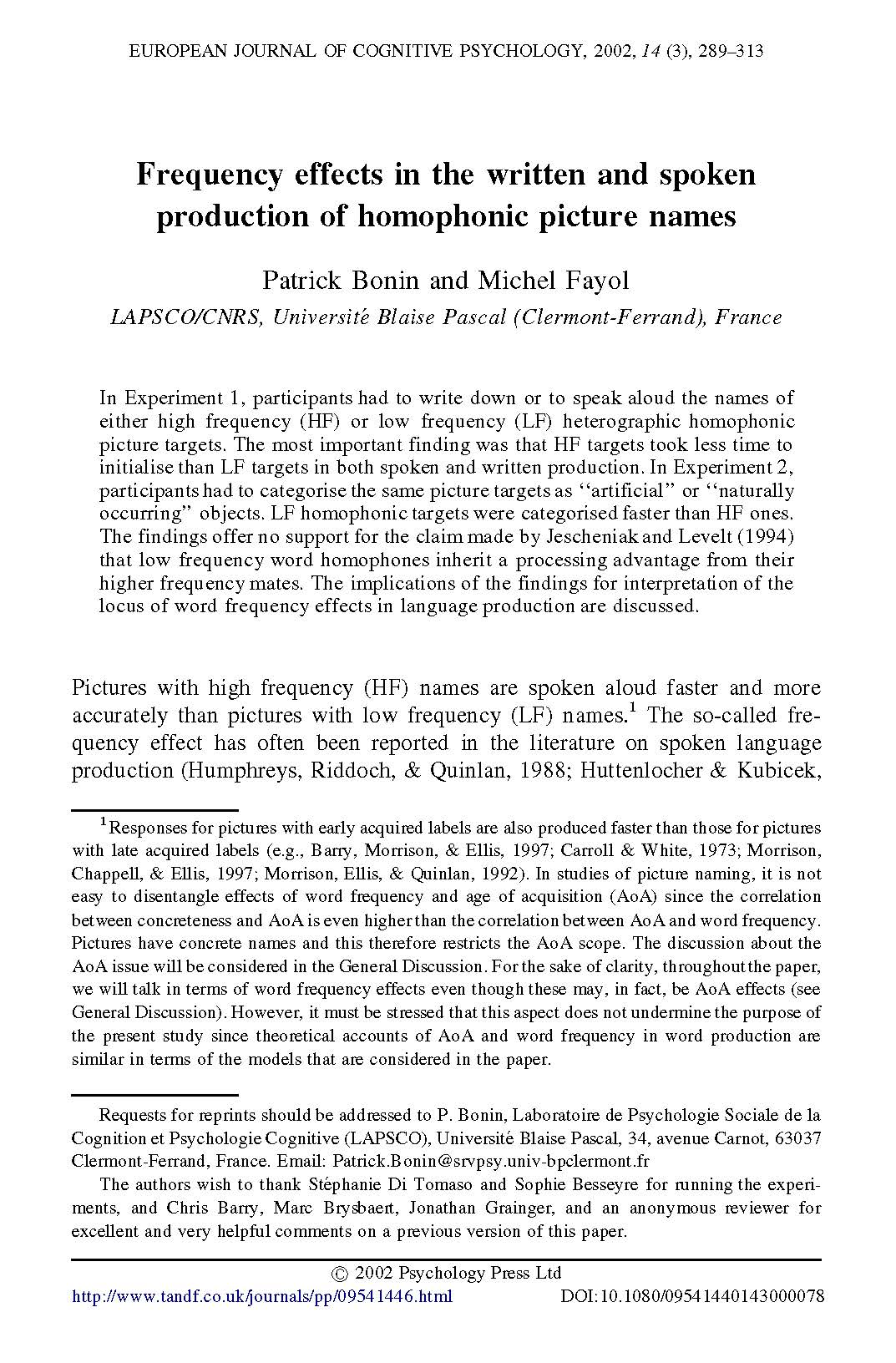In Experiment 1, participants had to write down or to speak aloud the names of either high frequency (HF) or low frequency (LF) heterographic homophonic picture targets. The most important finding was that HF targets took less time to initialise than LF targets in both spoken and written production. In Experiment 2, participants had to categorise the same picture targets as “artificial” or “naturally occurring” objects. LF homophonic targets were categorised faster than HF ones. The findings offer no support for the claim made by Jescheniak and Levelt (1994) that low frequency word homophones inherit a processing advantage from their higher frequency mates. The implications of the findings for interpretation of the locus of word frequency effects in language production are discussed.
Frequency effects in the written and spoken production of homophonic picture names
